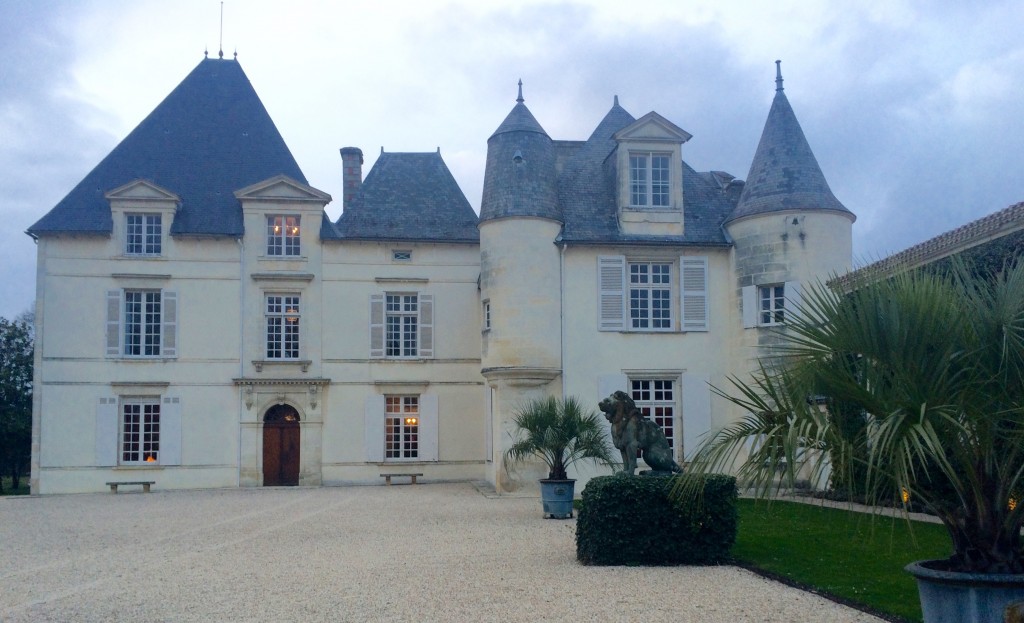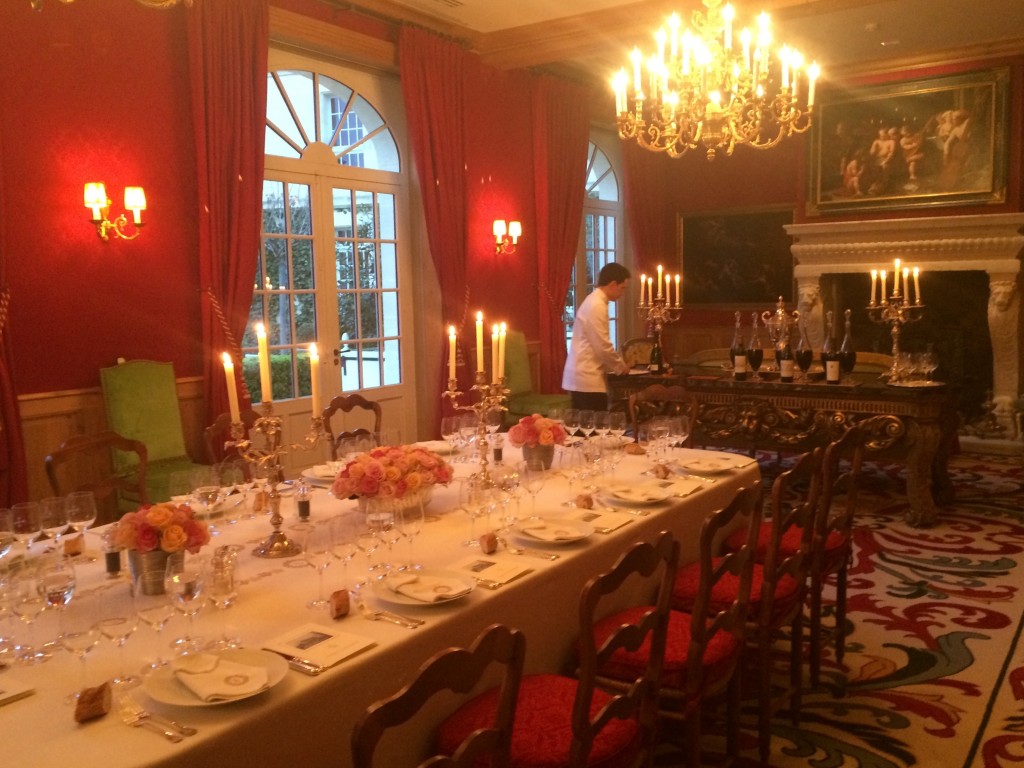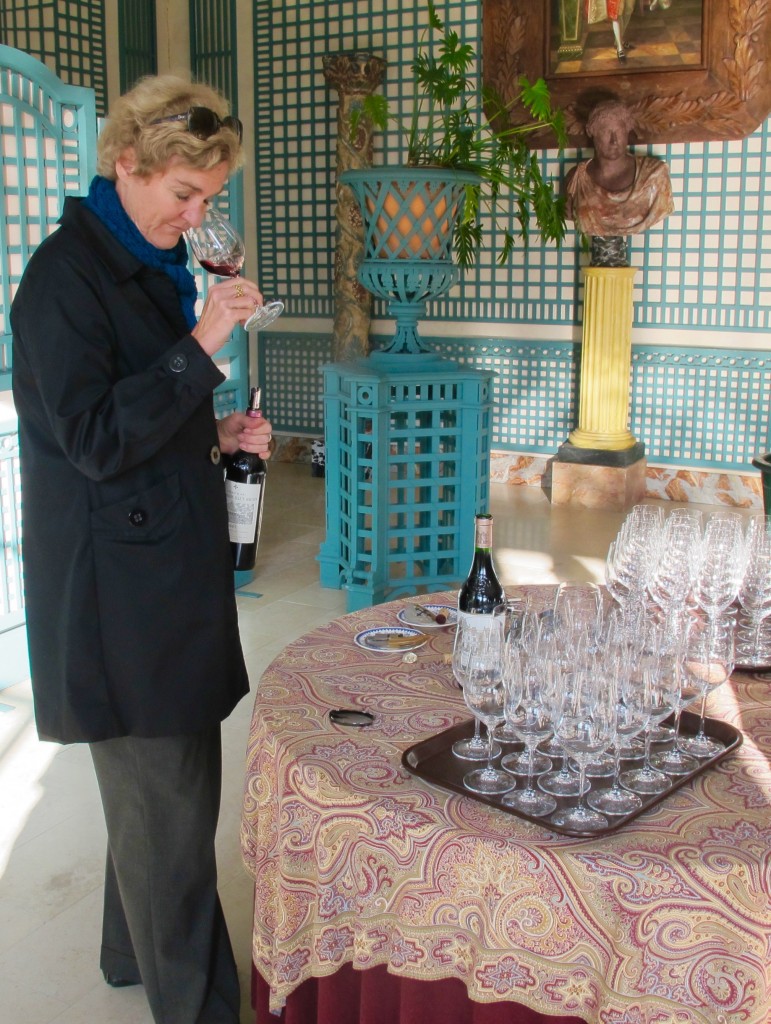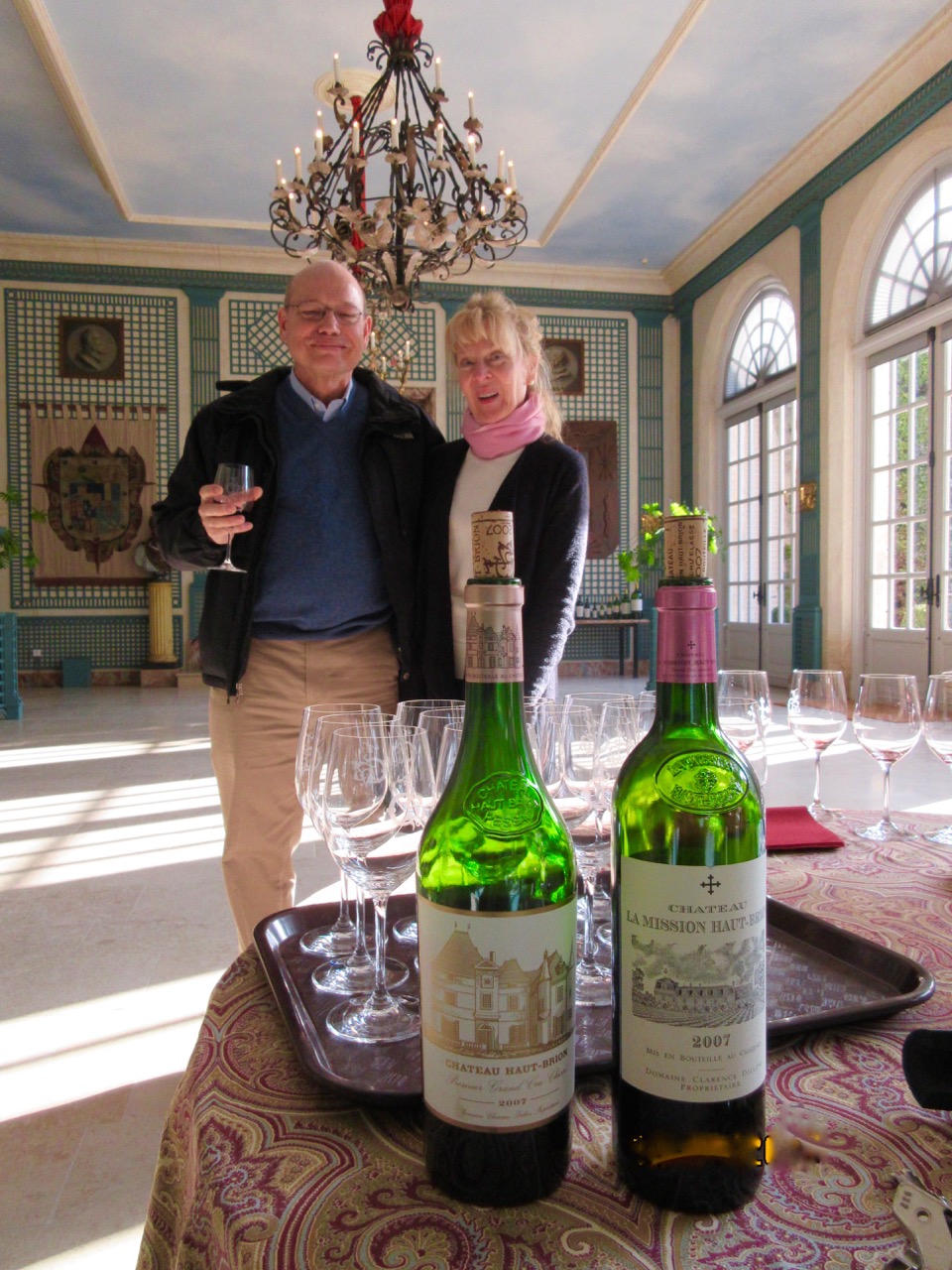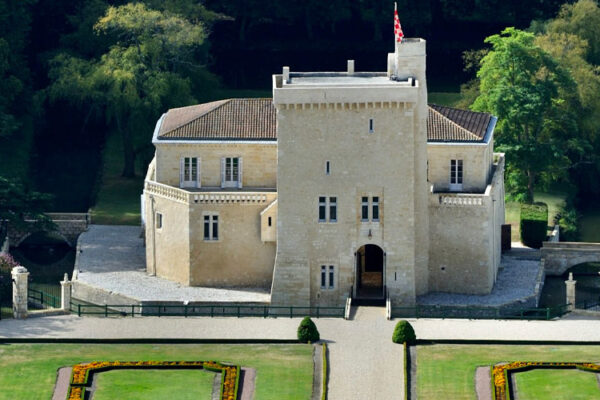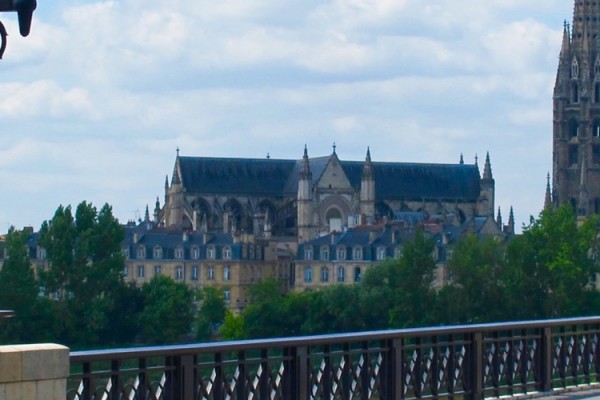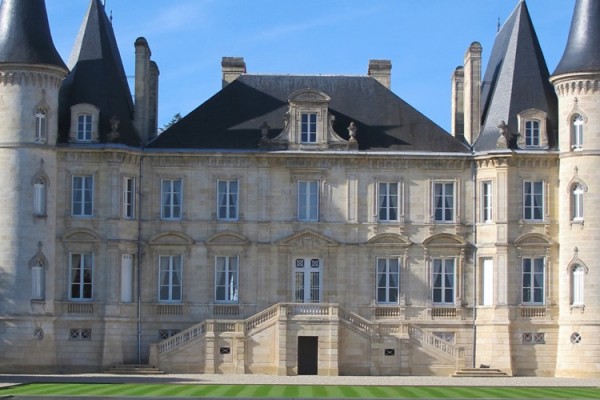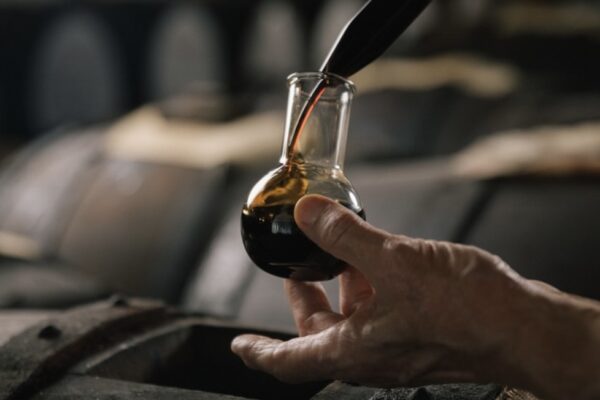Pessac-Léognan: On the Comeback Trail
by Michel Thibault, of Michel Thibault Wine
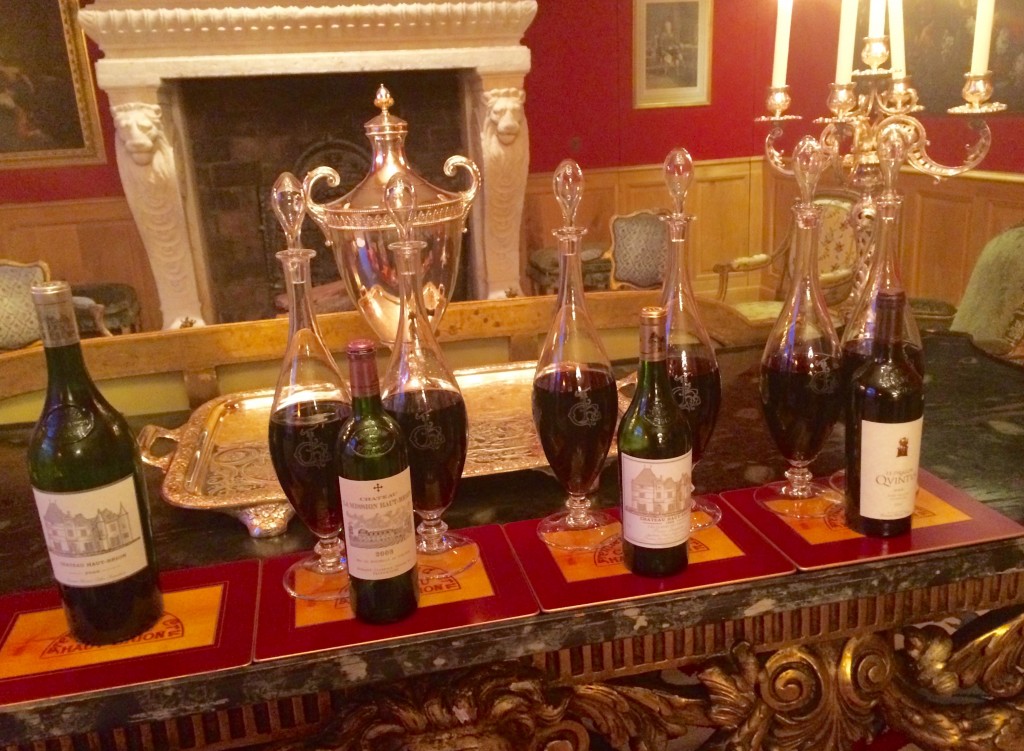
Pessac-Léognan offers what no other area around Bordeaux can: top quality whites as well as top-notch red wines. Here a selection from Château Haut-Brion. Photo by Marla Norman.
The difficult red Bordeaux vintages of the past three to four years have, as a blessing, highlighted the excellent white wines made in the Pessac-Léognan area near Bordeaux. Pessac-Léognan is located but a few miles southward from the city itself and lies to the left of the Garonne river (which eventually joins the Dordogne to form the Gironde) and is part of a larger zone called Graves (after the gravelly soil of the region).
Interestingly, with Bordeaux housing ever expanding south, many of the châteaux in the appellation are situated in the middle of neighborhoods. What a surprise to drive to Haut-Brion and La Mission Haut-Brion through a number of narrow streets and to see these châteaux bordered by small houses on all sides!
From a wine lover’s point of view, Pessac-Léognan offers what no other area around Bordeaux can: top quality whites as well as top-notch red wines. Pessac-Léognan is the only area, other than the Médoc, to feature one of the 1855 classified first growths, but of course, during that classification only Haut-Brion was allowed to compete. Since then, a Graves Classification was formatted in 1959 to give local wines their rightful place on the quality ladder and in 1987, Pessac-Léognan was granted an AOC status (Appellation d’Origine Contrôlée).
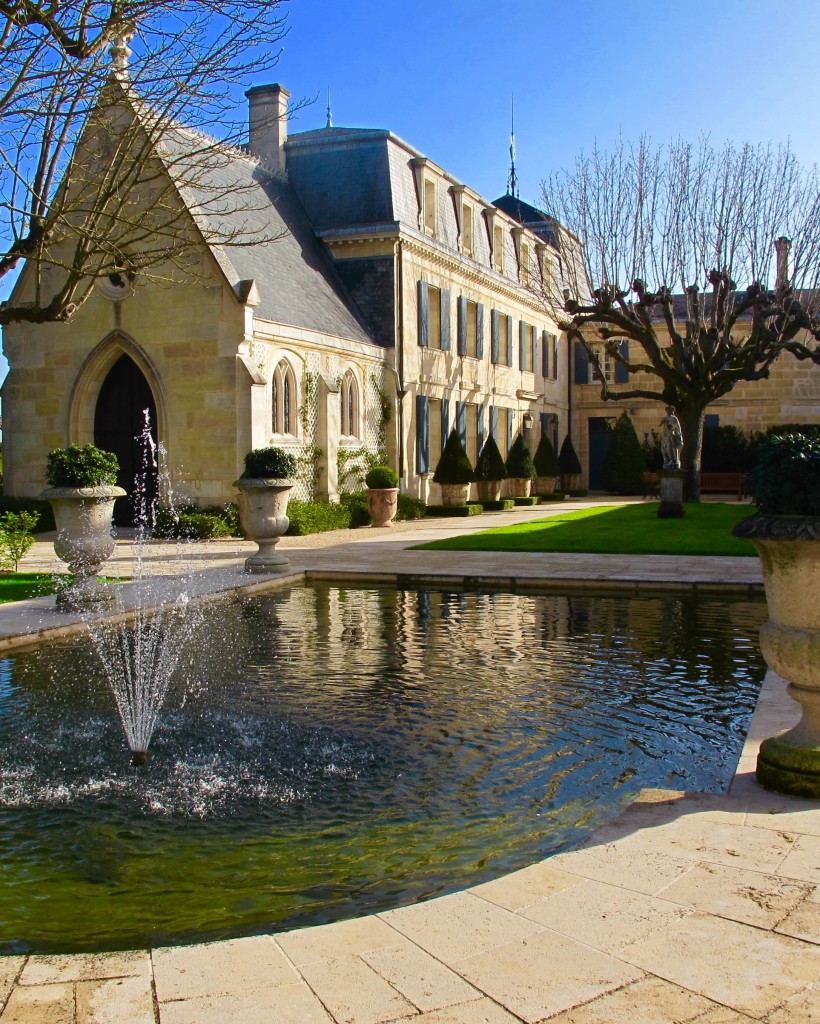
Château La Mission Haut-Brion was awarded 100 pts by Robert Parker an impressive six times. Photo by Marla Norman.
There are seven villages making up the appellation: Pessac proper (home of Haut-Brion), next door is Talence, where La Mission Haut-Brion and Pape Clément are situated, Martillac (Smith-Haut-Lafitte and La Tour Martillac) Léognan (Domaine de Chevalier, Carbonnieux, Fieuzal, Haut Bailly, Malartic-Lagravière, Olivier) being the more important areas.
Certainly, from an historical point of view, Pessac-Léognan and Graves have nothing to envy the Médoc or the right bank: the first grapevines planted in the Bordeaux appellation were planted in Pessac by the Romans. Château Pape Clément was already famous in the late middle ages, after the newly elected Pope Clément V was gifted the Château and its vineyards. As to Château Haut-Brion, it was already celebrated in the early 1600’s when the wine gurus of that era called it the best wine from France they had tasted. They called it “Ho Bryan”! Thomas Jefferson was an avid fan of Haut-Brion as well.
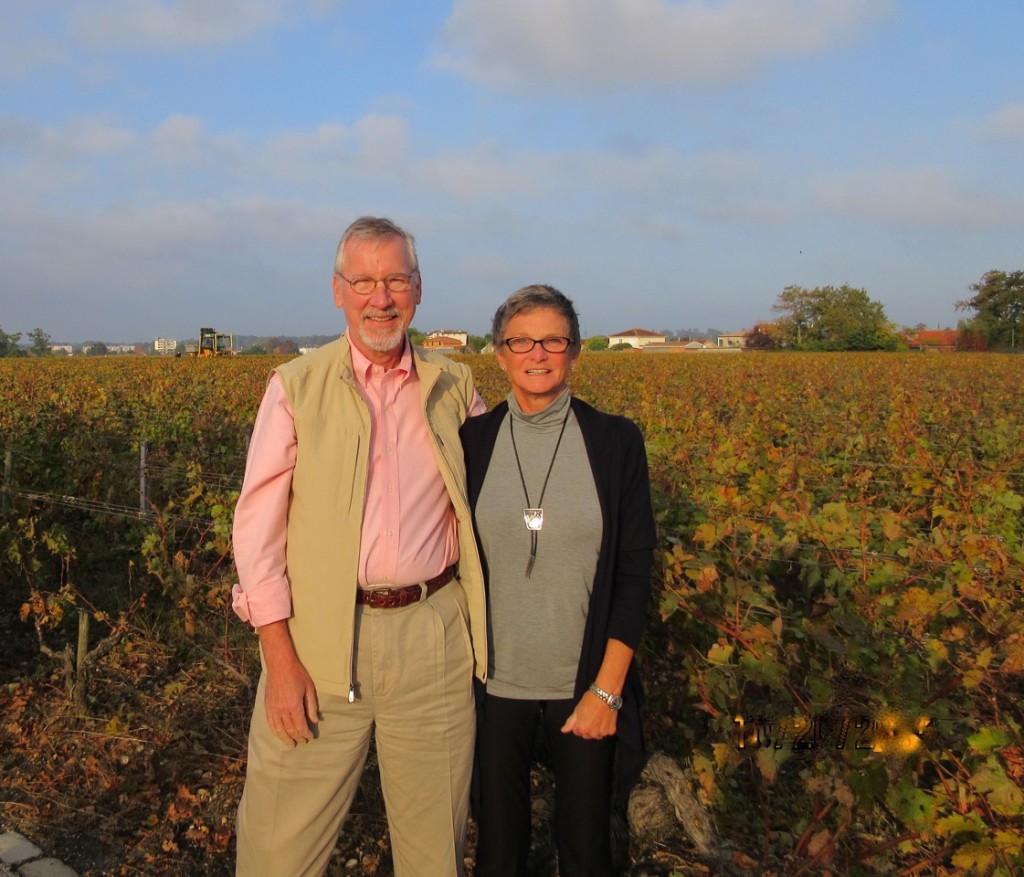
Pessac-Léognan appellation offers about 2,600 acres of vines, with 80% being planted to red varietals and 20% to whites. Here, Dr. Melvin & Debra Oakley in Pessac on a visit made possible by the Destin Charity Wine Auction Foundation.
In terms of specifics, the Pessac-Léognan appellation offers about 2,600 acres of vines, with 80% being planted to red varietals and 20% to whites. The whole of Graves is about 6,000 acres planted to vines with a third of them being planted to white varietals. The soil in Pessac-Léognan is generally made up of layers of gravel and stone while below are sand and clay. The many forests of pine trees are said to be protecting vineyards from dire weather and actually the temperature is usually the warmest in all of Bordeaux’s growing areas. Some say that the heat brought about by nearby housing and industrial activity adds to the overall warm climate.
In red wines, vines are planted mostly to Cabernet Sauvignon, although there is a little more Merlot in the final blend than in the Médoc. Their overall style offers notes of minerality of course (gravel, gravel) but also of forest floor and smoke. That allows them to marry best to hearty foods, with mushrooms for instance.
Best reds in the recent past: Haut-Brion of course, la Mission Haut-Brion (in some vintages equal quality to Haut-Brion) also owned by the same folks, Haut-Bailly, Smith-Haut-Lafitte, Malartic-Lagravière, Pape Clément, (under the ownership of Bernard Magrez, it is quickly becoming a superstar) are in a league of their own.
Whites are made of Sauvignon Blanc and Semillon and their flavor profile is that of grapefruit and nectarine when they are young. I favor their crisp acidity and love to serve them with oysters. As they age, they take on aromas of honey and nuts. I remember drinking an Haut-Bergey Blanc 2002 that knocked my socks off! Reminded me of a lighter version of the better Montrachets, with incredible aromatics. Most whites do not go through malolactic fermentation and get no skin contact (for freshness) but most of the better ones are barrel fermented. Best whites: Haut-Brion, la Mission Haut-Brion (both very small output and incredibly expensive), Domaine de Chevalier, Haut-Bergey, Smith-Haut-Lafitte. Best value white: Carbonnieux. Best recent vintages: 2012 and 2013.
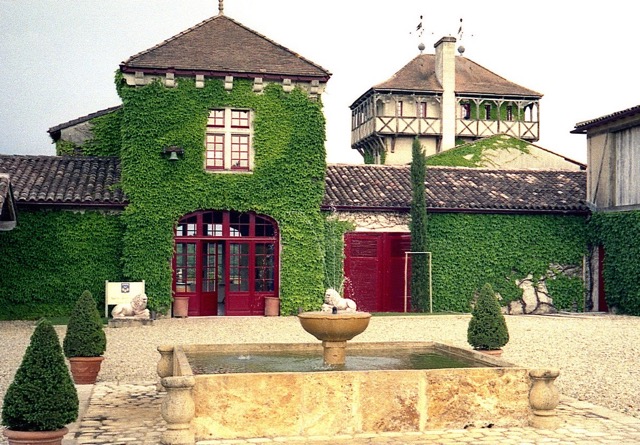
Beautiful ivied walls of Château Smith-Haut-Lafitte, home of the famous Sources de Caudalie. Photo from Wikipedia.
A short note about Haut-Brion, the flag bearer of all wineries in Pessac-Léognan: This beautiful property was purchased in 1935 by US banker and ambassador to France, Clarence Dillon. Dillon’s love for France drove him to develop and enhance the estate. Currently, his great-grandson, Prince Robert of Luxembourg, owns Haut-Brion and the General Manager is one of the most brilliant wine men in all of Bordeaux, Jean-Philippe Delmas. Reds are produced from a fairly even blend of Cabernet Sauvignon and Merlot, with a bit of Cabernet Franc and a touch of Petit Verdot. Whites, incredibly refined, are made from Sauvignon Blanc and Semillon (also in somewhat equal proportions), with a little Sauvignon Gris.
While Pessac-Léognan along with the rest of Graves has been in the shadow of other wine growing areas in the past decades, its quality level both in white and red wines, has done nothing but rise in the past few years. Not only have the stalwarts Haut-Brion and la Mission been on par with the very best, but excellent work from updated wineries such as Smith-Haut-Lafitte, Haut-Bailly, Haut-Bergey and Pape Clément are signaling that the old terms “too dry” and “somewhat unpleasant” are terms of the past.


